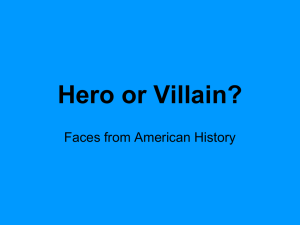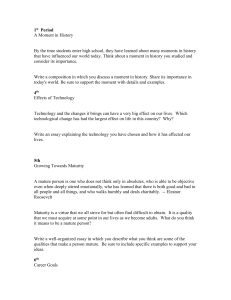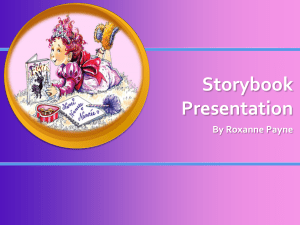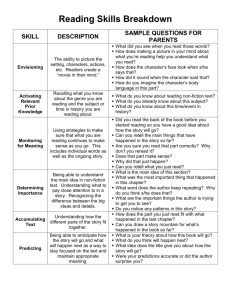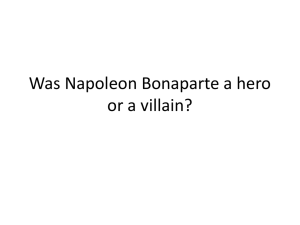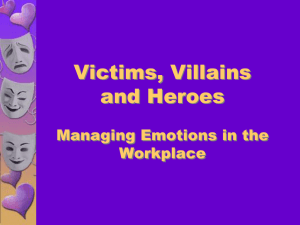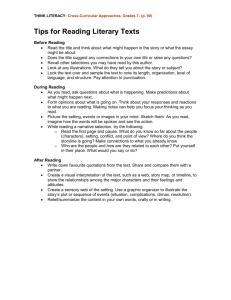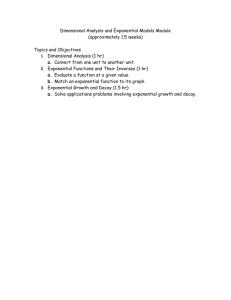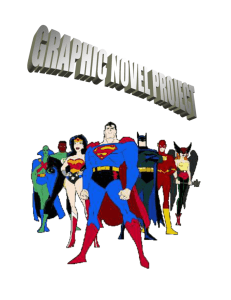Travel Smart Story Telling - Derbyshire County Council
advertisement
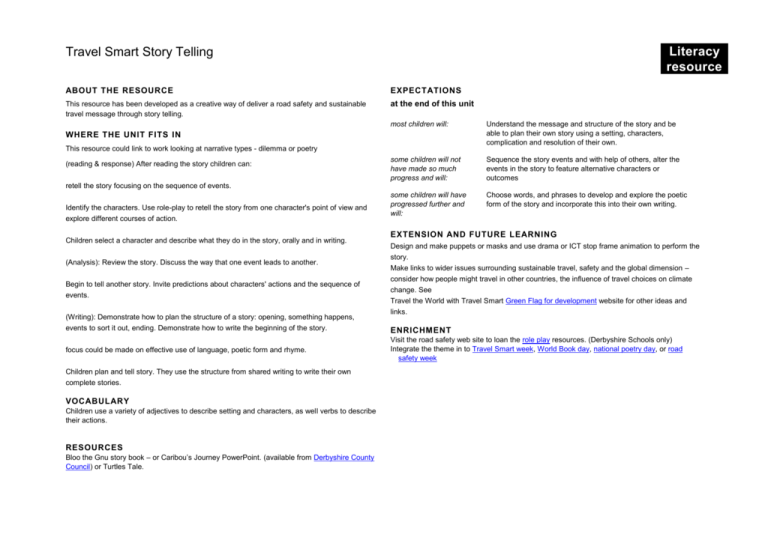
Literacy resource Travel Smart Story Telling ABOUT THE RESOURCE EXPECTATIONS This resource has been developed as a creative way of deliver a road safety and sustainable travel message through story telling. at the end of this unit most children will: Understand the message and structure of the story and be able to plan their own story using a setting, characters, complication and resolution of their own. some children will not have made so much progress and will: Sequence the story events and with help of others, alter the events in the story to feature alternative characters or outcomes some children will have progressed further and will: Choose words, and phrases to develop and explore the poetic form of the story and incorporate this into their own writing. WHERE THE UNIT FITS IN This resource could link to work looking at narrative types - dilemma or poetry (reading & response) After reading the story children can: retell the story focusing on the sequence of events. Identify the characters. Use role-play to retell the story from one character's point of view and explore different courses of action. Children select a character and describe what they do in the story, orally and in writing. (Analysis): Review the story. Discuss the way that one event leads to another. Begin to tell another story. Invite predictions about characters' actions and the sequence of events. (Writing): Demonstrate how to plan the structure of a story: opening, something happens, events to sort it out, ending. Demonstrate how to write the beginning of the story. focus could be made on effective use of language, poetic form and rhyme. Children plan and tell story. They use the structure from shared writing to write their own complete stories. VOCABULARY Children use a variety of adjectives to describe setting and characters, as well verbs to describe their actions. RESOURCES Bloo the Gnu story book – or Caribou’s Journey PowerPoint. (available from Derbyshire County Council) or Turtles Tale. EXTENSION AND FUTURE LEARNING Design and make puppets or masks and use drama or ICT stop frame animation to perform the story. Make links to wider issues surrounding sustainable travel, safety and the global dimension – consider how people might travel in other countries, the influence of travel choices on climate change. See Travel the World with Travel Smart Green Flag for development website for other ideas and links. ENRICHMENT Visit the road safety web site to loan the role play resources. (Derbyshire Schools only) Integrate the theme in to Travel Smart week, World Book day, national poetry day, or road safety week LEARNING OBJECTIVES POSSIBLE TEACHING ACTIVITIES LEARNING OUTCOMES CHILDREN SHOULD LEARN POINTS TO NOTE CHILDREN READING AND RESPONSE Sequence story events Introduce the story characters. Invite predictions as to what the story might be about and how Understand the moral or they characters might act. message of the story Read the story (either Bloo the Gnu Caribou’s journey or Turtles Tale) Understand: time and sequential relationships link story themes with own experience Making of puppets/masks could link to Technology – moving parts, joining materials The story could be used to make links to: promoting and encouraging walking identifying issues regarding polar environments and global warming Use puppets or masks to retell the story. Identify how each character acted in the story and draw parallels to real life situations. types of crossings Zebra Pedestrian Light Controlled Pedestrian User Friendly intelligent Two Can cross (bikes & pedestrians) Ask: What does the river/sea represent? What do the crocodiles/killer whales/piranhas represent? Who is the gnu/caribou/turtle like? How did the other characters think they could cross the river/sea? How does this reflect some people’s behaviour on the road? What is the message of the story? – i.e. use a crossing; stop, look and listen. Consolidate children’s understanding of different types of crossing and how to use them safely. ANALYSIS Understand and identify the structure of a story Use the premise of a variety of well known stories to identify: the setting the plot the main characters – hero, villain and mentor the problem/resolution message Understand reasons for events in stories Some stories have more than one villain or hero, mentor – some characters are shape shifters – who role is unclear and changes through the story. The story may also have other underlying messages. Reflect how the school travel story fits this sequence and how the setting and characters can be changed to deliver the message of using an alternative type of crossing. 2 LEARNING OBJECTIVES POSSIBLE TEACHING ACTIVITIES LEARNING OUTCOMES CHILDREN SHOULD LEARN WRITING How to plan and tell a story POINTS TO NOTE CHILDREN Identify a different type of crossing (toucan, pelican or zebra) Consider and agree a setting that would suit this character. Think about which other characters would suit this setting and the role they will play in the story. How will they act? What will they do? How might this relate to a real life experience? Use: story structure to write about own experience; The setting could reflect place linked to Geography topic language of time to structure a series of events. Use the internet or library to look at different habitat and associated animals – or use those suggested with this scheme of work. Collect words to describe the setting, characters and their actions. Identify the mentor, the hero, the villain and other characters and assign words or phrases to these characters, look for words that are particularly effective or fit the pattern and rhyme of the story. Working in groups – give each group a character and the words used to describe them. Decide, and describe in the writing, what the character is like, their action and result of this. Use ICT to write and edit the story Each group present back their portion of the story to create an overall story. Use words to connect the sequence of events – i.e. next, then, after that Children could create their book and illustrate it, for reading to others. Evaluate the effectiveness of the story and edit to improve. Are there any other environment or safety references in the story? How could these be used/developed Present the final version 3
